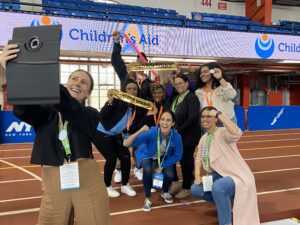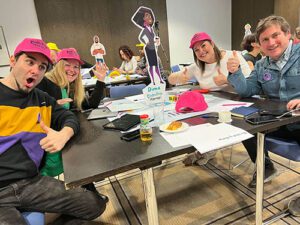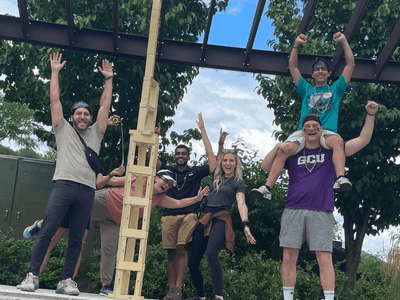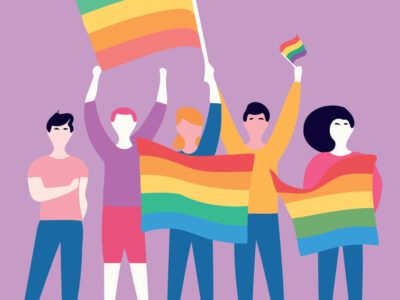As members of the workforce, it is essential to understand how other people function in social settings. Learning other people’s habits, behaviors, desires, and norms helps you manage people better, work with peers more effectively, and create a better team culture and environment. A critical aspect of this is understanding group dynamics.
The psychology of group dynamics is different depending on the environment. An individual may act differently while alone, with their work team, or with their family. Below, we break down group dynamics in the workplace, how groups can impact individual behaviors, and how to improve group synergy.
What Are Group Dynamics?
In order to understand the way people behave in group settings, we first need to define exactly what a group is. The simplest definition of a group is two or more people connected together by social relationships.1
Group dynamics is a term created in the early 1940s to describe the roles and behaviors people take on when put into a group, and how it affects the group as a whole. To understand a group dynamic, you need to understand patterns, roles, behaviors, structure, and communication within groups.
What Are the 4 Types of Groups?
Groups can be broken down into 4 varieties according to group dynamics social psychology:1
1) Primary Groups
Primary groups are collections of people like families, romantic couples, and close friends, which exist in intimate social settings and are expected to last for an extended period of time.
2) Collectives
Collectives are a grouping of people that are drawn together by an activity, experience, or event but dissipate as soon as the experience ends. A group of football fans would fall under the category of collectives, along with audience members at a concert or riders on a crowded train.
3) Categories
Categories are broad, overarching collections of people that are similar to each other in some way, like “Christians” or “LGBTIA+ individuals” or “American Citizens.” While people within these groups may feel a vague sense of kinship with each other, they can’t be expected to know every other person within their group.
4) Social Groups
Social groups are the groups you’re most likely to find within an office setting. Social groups can include sports teams, parent groups, and workgroups – basically, any group of people who are working together to accomplish a goal. This kind of group exists for different reasons than a primary group and requires more structure than collectives because they strive towards a common purpose.
How Structure Impacts Group Dynamics
Structure is an important element of all groups, but especially so in task groups. The way in which groups are structured determines their dynamic, how they function, and how they rely on each other. For all group structures, there is a certain amount of interdependence or a sense of relying on each other in some way. However, the forms of this interdependence can change as the structure of the group changes.
The images1 to the left show several diffe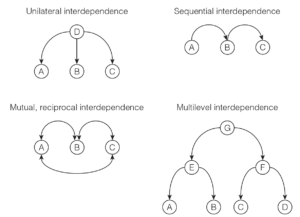
How to Determine if a Group Will Be Successful
Personality types can very strongly affect the success or failure of any given group. Group members who block communication by shifting responsibility and blame to other members or by being too accommodating and unable to drive forward motion can cause the structure of interdependence to fall apart.
Groups with members who are naturally inclined to be supportive of the others within their structure, or are particularly good at mediating conflicts, have as profound an impact on a group as their negative counterparts2.
One of the tricks to making a social group function smoothly is identifying the people within the group with personality traits and communication styles that will encourage productive workflow and putting them in positions within the group that will allow them to do so. The strength of the interpersonal relationships within a group can determine how well they function as a whole.
Causes of Poor Group Dynamics
There are many ways problems can occur within a group dynamic. Some of these include:
Lack of Communication: When team members don’t communicate effectively, it leads to misunderstandings, conflicts, and a breakdown in trust.
Lack of Clear Goals: Without clear goals or objectives, team members may feel directionless, leading to confusion and reduced motivation.
Poor Leadership: Ineffective or micromanaging leadership can demotivate team members, hinder decision-making, and create a negative work environment.
Limited Diversity: Homogeneous teams may struggle with creativity and innovation, as diverse perspectives and ideas are essential for problem-solving.
Conflict and Personality Clashes: Personality clashes, unresolved conflicts, and differing work styles can create tension within the team and impede collaboration.
Lack of Trust: When trust is lacking among team members, it can lead to a reluctance to share ideas, collaborate, or take risks, hindering overall group performance.
Unequal Contribution: If some team members consistently contribute more than others, it can lead to resentment, imbalance in workload, and a sense of unfairness.
Poorly Managed Meetings: Unproductive or poorly managed meetings can waste time, decrease morale, and contribute to a sense of disorganization within the team.
Lack of Recognition: Failing to recognize and appreciate team members’ contributions can lead to low morale, decreased motivation, and a lack of commitment to the team’s goals.
How to Improve Group Dynamics in the Workplace
Invest in Team Building Activities
Team building activities aren’t just fun, but they also promote trust, collaboration, and understanding among team members. These activities can range from fun icebreakers to more structured team challenges or retreats. By creating opportunities for team members to bond, learn about each other’s strengths and weaknesses, and work towards common goals outside of regular work tasks, you can strengthen relationships and improve group dynamics.
Enhance Communication Channels
Encouraging open and transparent communication channels, such as regular team meetings, one-on-one check-ins, and utilizing collaboration tools like project management software or communication platforms, is key to maintaining positive group dynamics. By fostering an environment where team members feel comfortable expressing ideas, providing feedback, and addressing concerns, you can enhance teamwork and reduce unnecessary misunderstandings.
Set Clear Goals and Expectations
Clearly defined goals and expectations help align team members toward a common purpose. Ensure that everyone understands their roles, responsibilities, and how their contributions contribute to the team’s success and regularly communicate progress towards goals, celebrate achievements, and adjust plans as needed to keep the team motivated and focused.
Provide Leadership Training
Invest in leadership training for managers and team leaders to enhance their skills in communication, conflict resolution, and team motivation. Effective leadership plays a crucial role in fostering a positive team environment, setting clear expectations, providing guidance, and addressing issues proactively. Empower leaders to lead by example, promote a culture of trust and accountability, and support team members in achieving their full potential.
Promote Diversity and Inclusion
Embrace diversity and inclusion initiatives within the team and organization. Encourage diverse perspectives, experiences, and backgrounds, as they can lead to more innovative solutions and better decision-making. Foster an inclusive culture where everyone feels valued, respected, and included, regardless of their differences. This can be achieved through training, policies that promote diversity, and creating opportunities for collaboration and learning across diverse teams.
Improve Group Dynamics at Work with TeamBonding
Overall, group dynamics psychology is important to understand how your employees work together and to help them achieve their fullest potential. It’s important to get your employees working together and building strong bonds to boost group dynamics.
Interested in fostering healthy group dynamics in your organization? Check out our variety of virtual, in-person, or hybrid team building activities to improve your team’s trust, communication, and collaboration.


